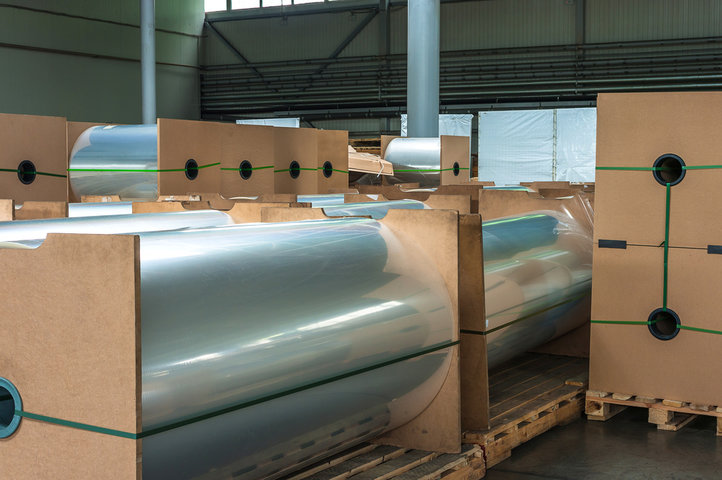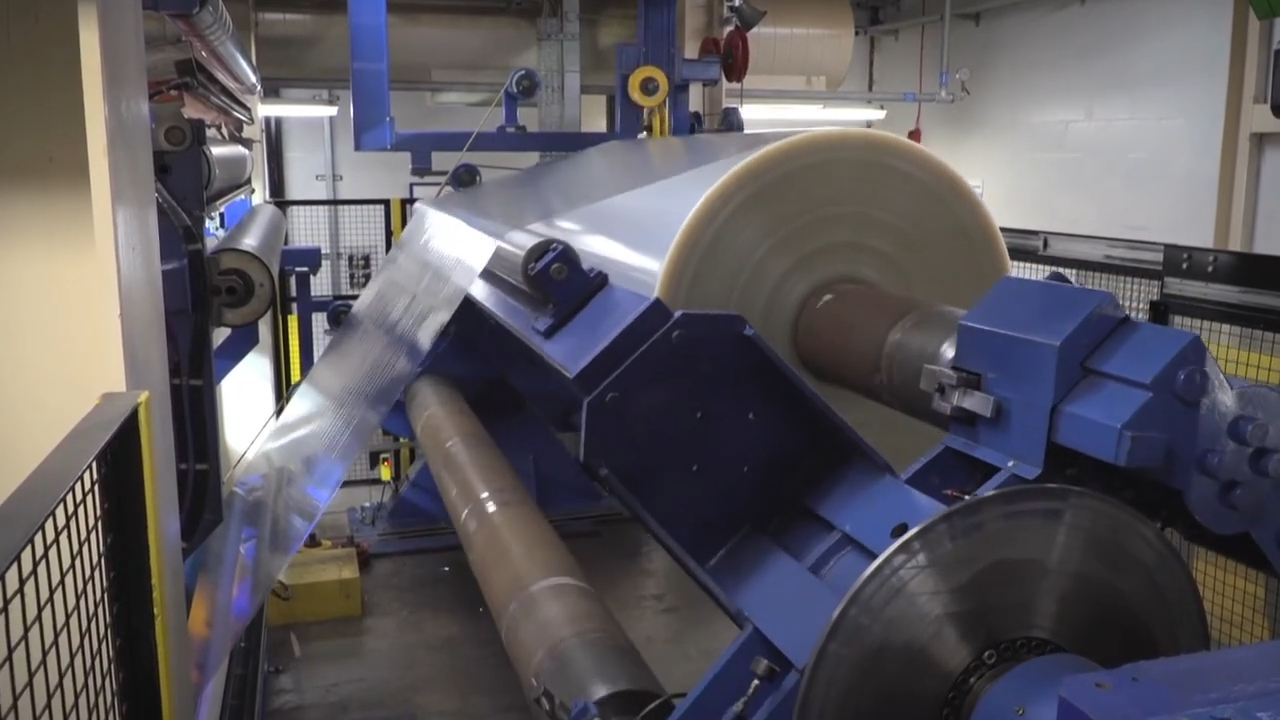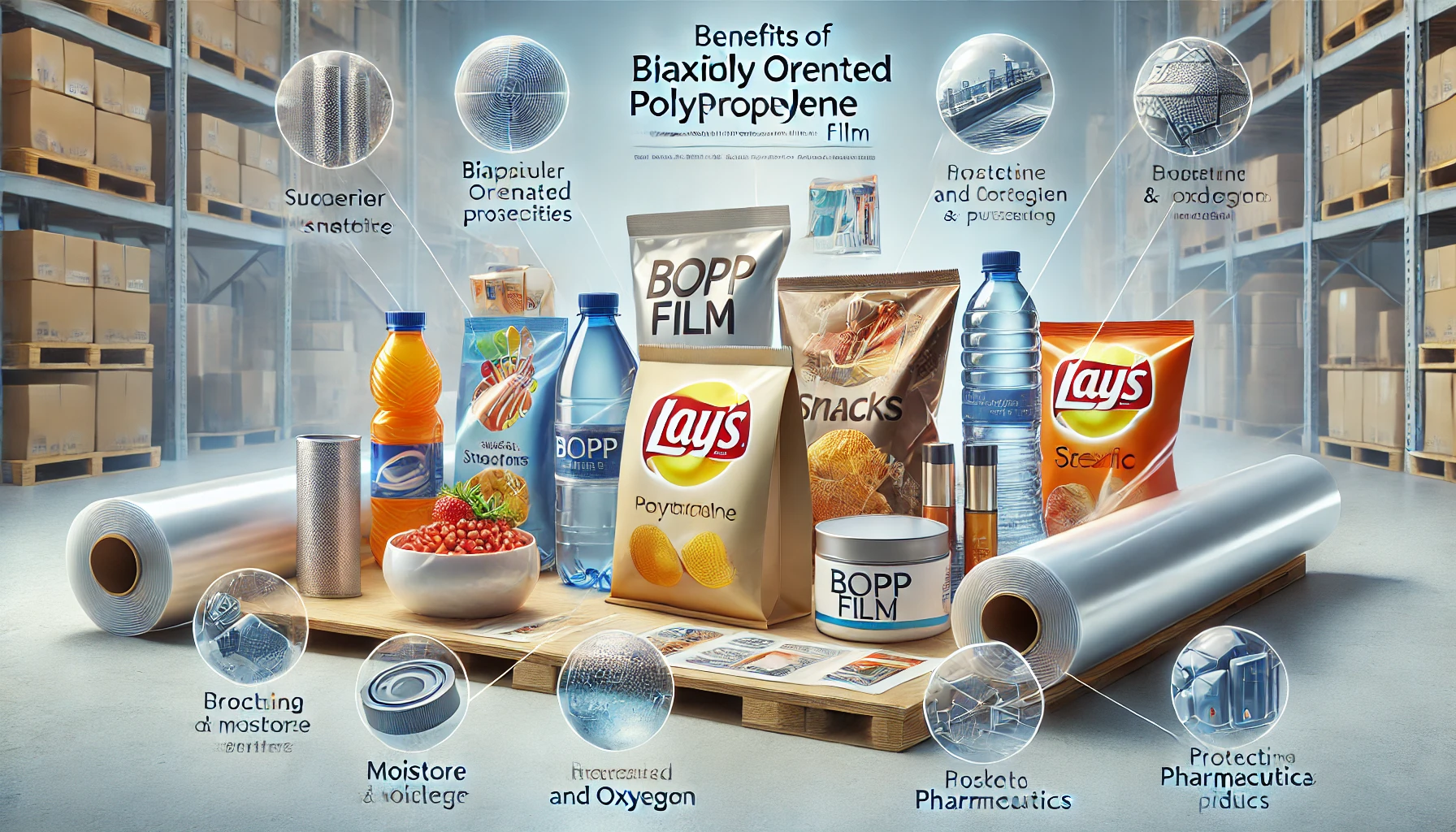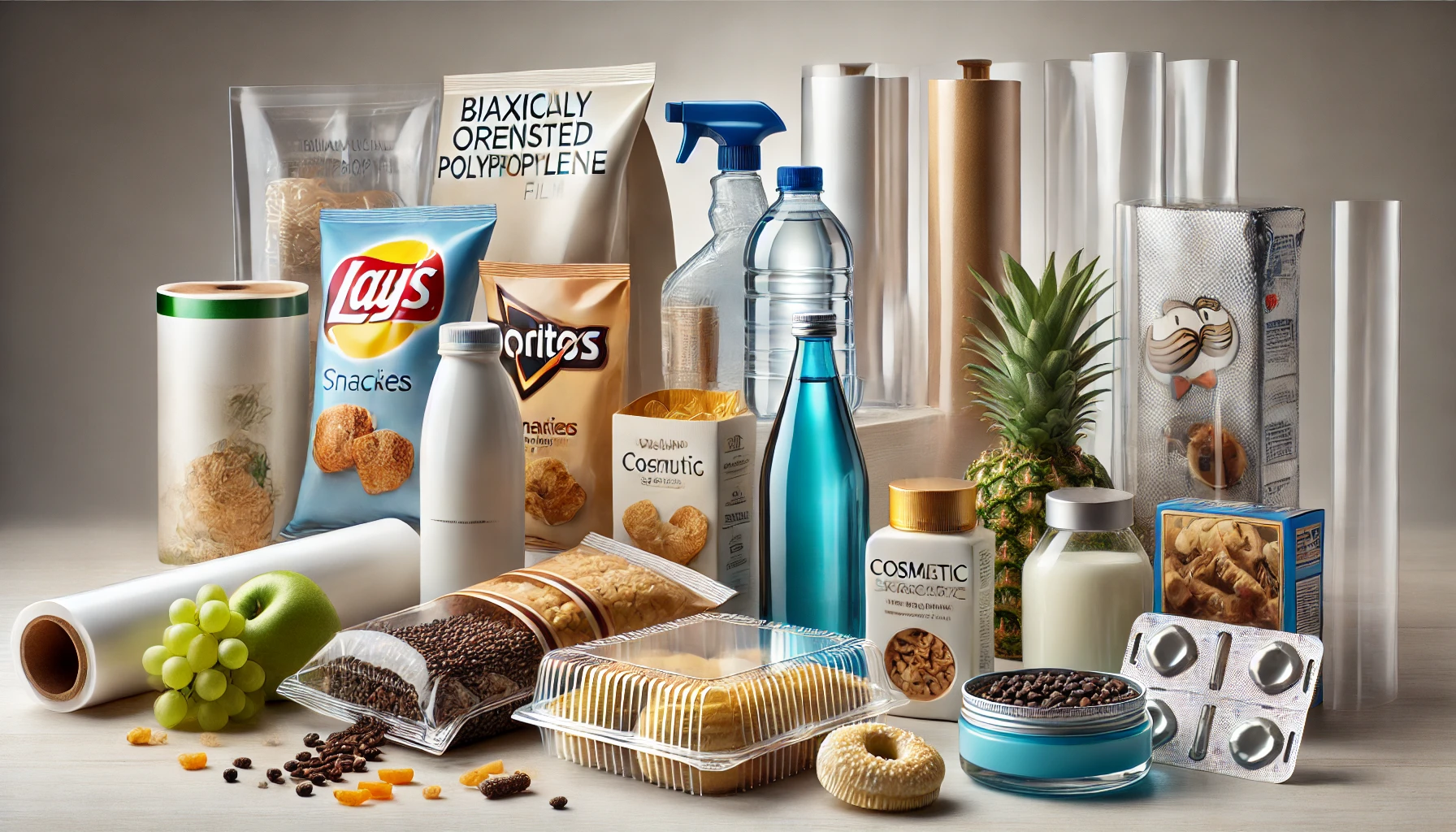Introduction
Overview of BOPP Film
Biaxially Oriented Polypropylene (BOPP) films are a critical component in the modern packaging industry. These films are created by stretching polypropylene in two perpendicular directions, which enhances their strength, clarity, and durability. This process makes BOPP films incredibly versatile, allowing them to be used across a wide range of industries.
BOPP films are especially important in packaging due to their excellent barrier properties. They effectively protect products from moisture, oxygen, and other environmental factors that could degrade quality. Additionally, their high clarity and gloss make them visually appealing, which is essential for consumer-facing products.
The primary goal of this guide is to provide a comprehensive overview of BOPP films. We'll delve into their production processes, explore their diverse applications, discuss their recyclability, and examine current market trends. By the end of this article, you’ll have a thorough understanding of why BOPP films are the go-to solution in packaging and other industries.
What is BOPP Film?

Definition and Composition
Biaxially Oriented Polypropylene (BOPP) film is a type of plastic film made from polypropylene, a polymer known for its strength and flexibility. The term "biaxially oriented" refers to the process used to manufacture this film. In this process, the film is stretched in two perpendicular directions: the machine direction (MD) and the transverse direction (TD). This stretching aligns the polymer molecules, significantly enhancing the film's physical properties.
Key Characteristics
BOPP film is renowned for several key characteristics that make it a preferred choice in various industries:
Transparency: It offers excellent clarity, which is crucial for product packaging where visibility is important. Consumers can easily see the product, which enhances appeal.
Mechanical Strength: The biaxial orientation process gives BOPP film high tensile strength. This means it resists tearing and puncturing, ensuring durability during handling and transportation.
Barrier Properties: BOPP films provide strong barriers against moisture, oils, and gases. These properties are vital in preserving the quality and extending the shelf life of packaged goods, particularly in the food industry.
How is BOPP Film Made?

Production Process
The production of Biaxially Oriented Polypropylene (BOPP) film involves several precise steps. These steps ensure the film achieves the desired properties of strength, clarity, and durability.
Polypropylene Base
The process begins with polypropylene, a versatile polymer known for its excellent chemical resistance and flexibility. Polypropylene pellets serve as the raw material, providing the foundation for BOPP film.
Extrusion
In the extrusion phase, the polypropylene pellets are melted down and formed into a thick, flat sheet. This molten sheet is then cooled and solidified into a more manageable form, ready for the next phase of the process.
Biaxial Orientation
The key to BOPP film's unique properties lies in its biaxial orientation. In this step, the film is stretched in two directions—first in the machine direction (MD) and then in the transverse direction (TD). This stretching aligns the polymer molecules, greatly enhancing the film's tensile strength, stiffness, and clarity.
Heat Setting and Winding
After stretching, the film undergoes heat setting. This process involves heating the film to a specific temperature to lock in the molecular orientation. Rapid cooling follows, stabilizing the film's structure. Finally, the film is trimmed to the desired width and wound onto rolls for further processing or shipment.
Surface Treatment
To enhance its performance, BOPP film often undergoes surface treatments. These treatments might include corona treatment or coating, which improve the film's printability, adhesion, and resistance to various environmental factors. Surface treatment ensures that BOPP film performs optimally in its final applications, whether for packaging, labeling, or industrial uses.
Benefits of BOPP Film

Superior Mechanical Properties
BOPP film is known for its exceptional mechanical properties, making it highly durable and reliable across various applications. One of its standout features is its high tensile strength. This strength comes from the biaxial orientation process, which aligns the polymer molecules and significantly enhances the film's resistance to stretching and tearing. Because of this, BOPP film can withstand rigorous handling and transportation without damage.
Moreover, BOPP film offers excellent resistance to puncture, impact, and wear. These qualities are crucial for packaging applications, where the film must protect the contents from physical damage. This durability ensures that products remain intact and safe, from production lines to consumer hands.
Outstanding Barrier Properties
Another key benefit of BOPP film is its superior barrier properties. It effectively blocks moisture and oxygen, which are two primary factors that can spoil food and degrade product quality. For food packaging, this means extending the shelf life of products by protecting them from environmental factors that could lead to spoilage.
For even greater protection, metallized BOPP films are available. These films offer enhanced barrier properties by adding a thin layer of metal, typically aluminum, to the film. This metallized layer provides additional protection against light, oxygen, and moisture, making it ideal for packaging sensitive products like snacks, confectionery, and pharmaceutical items.
Cost-Effectiveness and Sustainability
BOPP film is not only high-performing but also cost-effective. It is lightweight, which reduces material costs and makes it an economical choice for large-scale packaging needs. Its efficiency in production and material usage further adds to its cost-effectiveness, making it a preferred option in industries looking to optimize packaging costs without compromising on quality.
In addition to being cost-effective, BOPP film is also environmentally friendly. It is recyclable, which means it can be reused or repurposed after its initial use, reducing environmental impact. This recyclability, combined with its lightweight nature, contributes to lower overall resource consumption, making BOPP film a sustainable choice in modern packaging solutions.
High Clarity and Gloss
The high clarity and gloss of BOPP film make it an attractive option for product packaging. Its transparency allows consumers to see the product clearly, which can influence purchasing decisions by showcasing the quality and freshness of the contents. This visual appeal is particularly important in industries like food and cosmetics, where product presentation is key.
Additionally, the glossy finish of BOPP film enhances the overall aesthetic of packaging. This gloss adds a premium feel to the product, making it stand out on shelves and attracting consumer attention. Whether for retail packaging or labels, the high clarity and gloss of BOPP film contribute to a more appealing and marketable product.
Applications of BOPP Film

BOPP Film Used For: Versatile Applications Across Industries
BOPP film is widely recognized for its versatility, making it suitable for a broad range of applications across different industries. Below are some of the key areas where BOPP film plays an essential role.
Food Packaging
One of the most common uses of BOPP film is in food packaging. Thanks to its excellent barrier properties, BOPP film effectively protects snacks, bakery products, and confectionery items from moisture and oxygen, which can degrade quality. The film’s transparency also allows consumers to see the product, which is crucial in making purchasing decisions. Additionally, BOPP film's resistance to grease and oils makes it an ideal choice for packaging fatty foods.
Labeling and Overwraps
BOPP film is extensively used for labeling and overwrapping various consumer goods. Its high clarity and gloss enhance the visual appeal of product labels, helping brands stand out on store shelves. The film’s strength ensures that labels remain intact during transportation and handling, providing durability and maintaining the integrity of the branding. Overwraps made from BOPP film also protect products from external elements, ensuring they reach consumers in perfect condition.
Industrial Uses
In the industrial sector, BOPP film serves as an insulating material for electrical components. Its high dielectric strength and resistance to heat make it suitable for wrapping wires and cables, providing both protection and longevity. Additionally, BOPP film is used as a protective layer for various industrial products, shielding them from damage during storage and transportation.
Personal Care and Cosmetics
BOPP film is also popular in the personal care and cosmetics industry. It is used to package a wide range of products, including skincare items, hair care products, and hygiene supplies. The film’s ability to protect contents from moisture and contamination ensures that products remain effective and safe for consumer use. Moreover, its clarity and gloss enhance the presentation of cosmetic products, making them more attractive to buyers.
Pharmaceuticals
In the pharmaceutical industry, BOPP film is critical for ensuring the safety and efficacy of medical products. It provides a barrier against moisture, oxygen, and light, all of which can compromise the quality of pharmaceuticals. By extending shelf life and maintaining product integrity, BOPP film plays a vital role in protecting medications and other health-related products.
Types of BOPP Film
BOPP films come in various types, each designed to meet specific needs in different industries. These films are classified based on their properties, which are tailored through the manufacturing process to serve particular functions. Below is a breakdown of the general and specialty BOPP films and their applications.
General BOPP Film
Common Uses and Characteristics
General BOPP film is the most widely used type due to its balanced properties. It offers high transparency, excellent tensile strength, and good barrier properties, making it suitable for a variety of packaging applications. This type of film is often used in food packaging, labels, and overwraps. Its versatility and cost-effectiveness make it a go-to option for many manufacturers who need reliable, high-performance packaging material.
Specialty BOPP Films
High-Shrinkage BOPP Films
High-shrinkage BOPP films are designed to shrink uniformly when exposed to heat. This makes them ideal for wrapping products with irregular shapes, such as bottles and cans. The shrinkage ensures a tight fit around the product, providing a secure and aesthetically pleasing package. Additionally, these films are used in tamper-evident packaging, where the shrinkage helps to reveal if a product has been opened or altered.
Heat Sealable BOPP Films
Heat sealable BOPP films feature a coating that allows them to be sealed to themselves or other materials using heat. This type of film is particularly useful in the packaging of snacks, confectionery, and medical products. The heat-sealing property ensures a strong and secure closure, which is critical for maintaining product freshness and safety. The film’s ability to seal at lower temperatures also improves efficiency in packaging processes.
Matte, Metallized, and Anti-Fog BOPP Films
Specialty BOPP films also include those with specific surface treatments or coatings:
Matte BOPP Films: These films have a non-glossy, matte finish that reduces glare and gives packaging a premium, soft-touch feel. They are often used in high-end product packaging where aesthetics play a crucial role.
Metallized BOPP Films: These films are coated with a thin layer of metal, typically aluminum, to enhance barrier properties against light, oxygen, and moisture. They are widely used in snack packaging and other products that require extended shelf life.
Anti-Fog BOPP Films: These films are treated to prevent fogging, ensuring that the contents remain visible even when exposed to temperature changes. This property is especially important in packaging fresh produce, where condensation inside the package can obscure the product and affect its visual appeal.
BOPP Film Packaging: The Go-To Solution
Why BOPP Film is Ideal for Packaging
BOPP film stands out as a premier choice for packaging across various industries due to its unique combination of properties. Here’s why it’s considered the go-to solution for packaging needs:
Barrier Properties
One of the most critical advantages of BOPP film is its excellent barrier properties. It effectively protects packaged goods from moisture and oxygen, which are two of the main culprits that can spoil food and other perishable products. This protection ensures that products remain fresh and extend their shelf life. Additionally, BOPP films, particularly those that are metallized, provide enhanced protection against light, further safeguarding sensitive items like snacks and confectionery from degradation.
Cost-Effectiveness
BOPP film is not just about performance; it’s also about efficiency. The lightweight nature of BOPP film translates to lower material costs and reduced transportation expenses. Because it uses less material without sacrificing strength, it’s an economical choice for businesses looking to maximize their packaging budget. Additionally, the film’s recyclability adds another layer of cost-effectiveness by reducing waste and supporting sustainable practices.
Aesthetic Appeal
In today’s competitive market, how a product looks on the shelf can make a significant difference. BOPP film enhances product visibility with its high clarity and gloss. This transparency allows consumers to see the product clearly, which can influence purchasing decisions. The film’s glossiness adds a premium feel to the packaging, making products stand out and appear more attractive. Whether it’s for food packaging or cosmetic products, BOPP film helps brands create visually appealing and marketable packaging.
Durability
Durability is another key reason BOPP film is favored for packaging. The film’s high tensile strength and resistance to puncture and impact mean that products are well-protected during transportation and storage. This durability ensures that items arrive at their destination in perfect condition, reducing the risk of damage and loss. Whether used in flexible pouches or as overwraps, BOPP film provides robust protection that maintains the integrity of the packaged goods.
Is BOPP Film Recyclable?
Understanding the Recyclability of BOPP Film
BOPP film, widely used in various industries, is known not just for its performance but also for its recyclability. As environmental concerns grow, the recyclability of packaging materials like BOPP film becomes increasingly important. BOPP film is fully recyclable, making it a sustainable choice in the packaging world. This ability to be recycled reduces the overall environmental impact, aligning with global efforts to minimize plastic waste.
Environmental Impact
The recyclability of BOPP film plays a significant role in reducing the environmental footprint of packaging. When recycled, BOPP film can be repurposed into a variety of new products, which helps decrease the demand for virgin plastic. This recycling process conserves resources and reduces the amount of waste that ends up in landfills. Additionally, because BOPP film is lightweight, it requires less material to produce, further contributing to its eco-friendly profile.
Recycling Process
Recycling BOPP film involves several steps. First, the film is collected and sorted. It then undergoes cleaning to remove any contaminants like ink or adhesives. After cleaning, the film is shredded into small pieces, which are then melted down and reformed into pellets. These pellets can be used to manufacture new plastic products, creating a circular economy where materials are reused rather than discarded.
However, the recycling of BOPP film does present some challenges. For instance, the presence of different coatings or laminations on the film can complicate the recycling process. These additional layers need to be carefully removed or processed separately to ensure that the recycled material maintains high quality.
Industry Trends
The packaging industry is continually innovating to improve the recyclability of BOPP films. One trend is the development of mono-material packaging, where BOPP is used without other materials that might hinder recycling. Another innovation is the improvement of recycling technologies that can handle the complexities of BOPP films, including those with coatings or laminations. These advancements are making BOPP films even more sustainable, helping companies meet stricter environmental regulations and respond to consumer demand for greener packaging solutions.
BOPP Film Market Insights
Global Market Trends
The global demand for Biaxially Oriented Polypropylene (BOPP) films is steadily increasing across various regions. This growth is driven by the material’s versatility, cost-effectiveness, and environmental benefits. In particular, the Asia-Pacific region is experiencing the fastest growth due to its expanding packaging industry and rising consumer goods market. Countries like China and India are leading in the production and consumption of BOPP films, fueled by the booming e-commerce and food packaging sectors.
Emerging markets in Latin America and Africa are also contributing to the global demand. As these regions develop, the need for durable and affordable packaging solutions like BOPP films is on the rise. Moreover, the increasing shift towards flexible packaging, driven by consumer preferences and the need for sustainable solutions, is further propelling the BOPP film market globally.
Key Industry Players
Several major manufacturers dominate the BOPP film market, each contributing significantly to its growth and innovation. Companies like Taghleef Industries, Cosmo Films, and Jindal Poly Films are among the leading producers, continuously expanding their product offerings to meet global demands. These industry giants are investing in advanced manufacturing technologies and sustainable practices, helping to enhance the quality and recyclability of BOPP films.
Other notable players include Innovia Films and SRF Limited, who are also key contributors to the market. These companies are known for their focus on innovation, developing specialty films that cater to specific market needs such as high-barrier, metallized, and heat-sealable BOPP films. Their global reach and extensive product portfolios ensure that they remain competitive in this growing market.
Challenges and Future Opportunities
Despite the growing demand, the BOPP film market faces challenges, particularly concerning environmental sustainability. The increasing scrutiny of plastic use has led to calls for more sustainable packaging solutions. However, the recyclability of BOPP films positions them well in the context of a circular economy. Industry players are actively working to improve recycling processes and develop biodegradable alternatives to address environmental concerns.
Future opportunities in the BOPP film market lie in further innovations aimed at enhancing film performance while minimizing environmental impact. The development of mono-material packaging, which simplifies recycling, and the use of bio-based materials are promising avenues. Additionally, the expansion of BOPP film applications into new industries, such as electronics and pharmaceuticals, presents significant growth potential.
Frequently Asked Questions (FAQs)
What Makes BOPP Film Different from Other Packaging Films?
BOPP film is unique due to its biaxial orientation, which enhances strength, clarity, and durability compared to other films.
How Does BOPP Film Improve Product Shelf Life?
BOPP film extends shelf life by providing excellent barriers against moisture, oxygen, and light, which preserve product freshness.
What Are the Advantages of Metallized BOPP Films?
Metallized BOPP films offer enhanced barrier properties, protecting products from light, oxygen, and moisture, ideal for perishable goods.
What Is BOPP Film Made Of?
BOPP film is made from polypropylene, a polymer known for its strength and flexibility, enhanced through biaxial orientation.
How Is BOPP Film Recyclable?
BOPP film can be collected, cleaned, and reprocessed into new plastic products, contributing to a circular economy.
What Is BOPP Film Used For?
BOPP film is used in food packaging, labeling, overwraps, and industrial applications due to its versatile properties.
Why Choose BOPP Film for Packaging?
BOPP film is durable, cost-effective, and visually appealing, making it an ideal choice for a wide range of packaging needs.
Conclusion
Summary of Key Points
BOPP film stands out as a versatile, cost-effective, and sustainable packaging material. Its superior mechanical properties, including high tensile strength and excellent barrier capabilities, make it ideal for protecting a wide range of products. Whether used in food packaging, labeling, or industrial applications, BOPP film enhances product visibility with its high clarity and gloss, while also extending shelf life. The global market for BOPP films continues to grow, driven by increasing demand and innovations in sustainability, making it a key player in modern packaging solutions.
Final Thoughts
Oyang Company is dedicated to delivering top-quality BOPP film solutions that meet the diverse needs of industries worldwide. By combining advanced manufacturing techniques with a commitment to sustainability, Oyang offers products that not only perform exceptionally but also support environmental goals. We encourage you to explore our range of BOPP films and reach out to our team for more information on how we can support your packaging needs.
Call to Action
Ready to enhance your packaging with top-quality BOPP film solutions? Explore Oyang’s comprehensive range of BOPP films tailored to meet the diverse needs of your business. Our products offer superior durability, excellent barrier properties, and cost-effectiveness, making them the ideal choice for various applications.
Don’t wait—visit our product page today to discover the perfect BOPP film for your needs. Have specific questions or need personalized assistance? Contact us directly to discuss your requirements. Our team is here to provide expert guidance and ensure you find the best solutions to elevate your packaging.
Let’s work together to make your products stand out with Oyang’s premium BOPP films!














